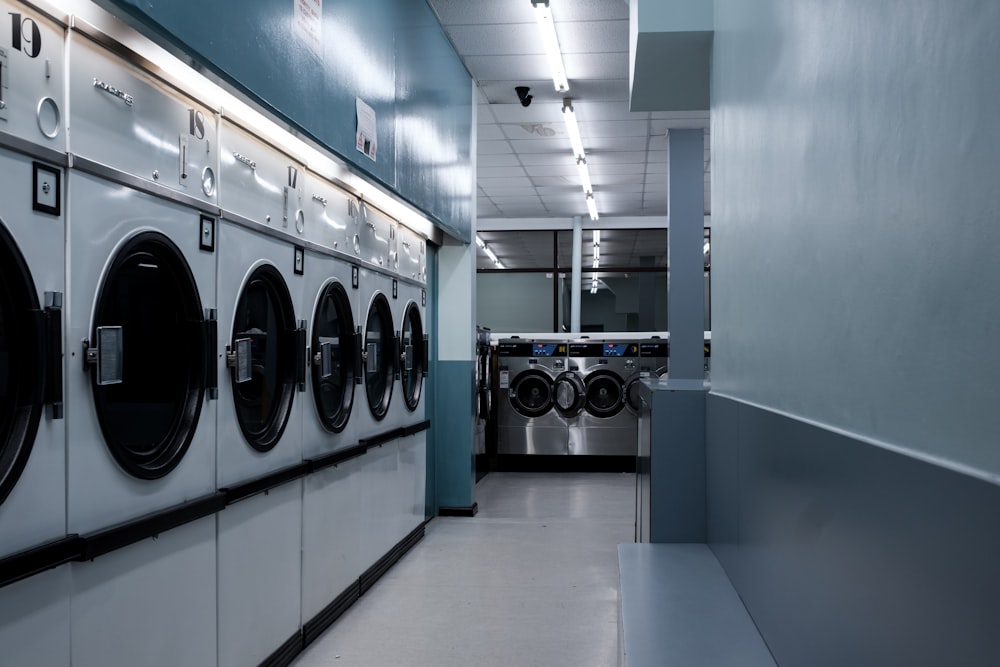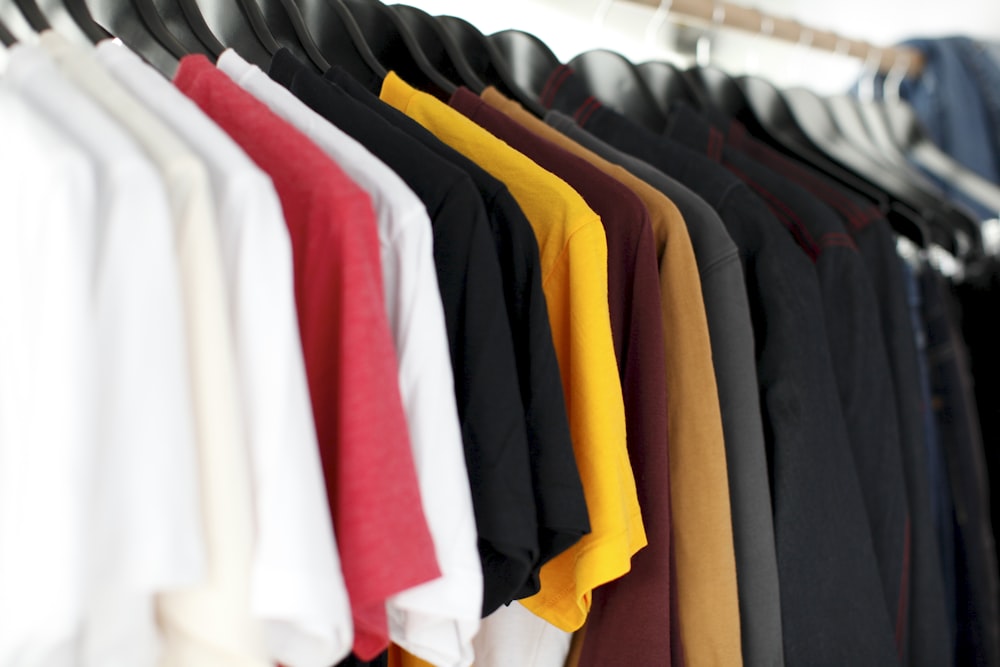Why Is It Called Dry Cleaning: A Closer Look at Its History and Process

Dry cleaning services aren’t new to the public, and yet, many are still unsure as to why is it called dry cleaning. The term “dry cleaning” can be a source of confusion, especially considering that it involves the use of liquids and chemicals, which seems contradictory to the word “dry” in the name.
How can your garments be cleaned while still being dry? Or, can this method clean your clothes at all? These and many other questions about dry cleaning will be answered in this article. Keep reading to learn more about this special service!
Dry Cleaning Explained: What is It and How Does it Work?
Dry cleaning is a process of cleaning clothing and textiles that differs significantly from the traditional wet cleaning process that uses detergent and a washing machine. Dry cleaning uses chemical solvents to clean clothes. While liquid solvents are used in dry cleaning, they do not saturate the fabric in the same way water does in traditional laundering.
Instead, these solvents are able to effectively clean garments without causing damage, wrinkle, shrinking, or fading, making dry cleaning an ideal method for delicate fabrics and materials that cannot withstand the agitation of water and detergent.
The Process of Dry Cleaning
When you take your garments to a professional dry cleaner, they go through a meticulous cleaning cycle. Here’s how it works:
Step 1: Garment Inspection – Your clothes are first examined for stains and fabric type. This step is crucial in determining the appropriate cleaning method.
Step 2: Pre-Treatment – Stubborn stains are pre-treated to ensure they are effectively removed during the cleaning process.
Step 3: Cleaning in a Machine – The garments are loaded into a dry cleaning machine. This machine uses the chosen solvent, such as perchloroethylene or liquid carbon dioxide, to clean the clothes.
Step 4: Rinsing and Drying – After cleaning, the solvent is drained and recycled for future use. The garments are then dried using warm air in the same machine.
Step 5: Finishing Touches – Once dry, your clothes are professionally finished, which may include ironing or pressing to remove wrinkles and creases.
The History of Dry Cleaning: How and When It Started
 The more recognizable form of dry cleaning we know today began to emerge in the 19th century. Credit for its development is often attributed to Jean-Baptiste Jolly, a French dye-works owner, who discovered that kerosene could effectively remove stains from clothing without causing damage. However, the use of kerosene had its own set of issues, including its flammability and strong odor.
The more recognizable form of dry cleaning we know today began to emerge in the 19th century. Credit for its development is often attributed to Jean-Baptiste Jolly, a French dye-works owner, who discovered that kerosene could effectively remove stains from clothing without causing damage. However, the use of kerosene had its own set of issues, including its flammability and strong odor.
The breakthrough came when Thomas L. Jennings, an African-American tailor and inventor, patented a dry cleaning process called “dry scouring” in 1821. This method used a combination of various solvents and absorbents, marking a significant step forward in the evolution of dry cleaning. Jennings’ work paved the way for the dry cleaning industry to develop further.
Throughout the 19th and early 20th centuries, dry cleaning methods continued to improve. The use of less flammable and odorous solvents like gasoline and eventually perchloroethylene became widespread. These developments not only made dry cleaning safer but also more effective at removing a wide range of stains and contaminants.
Dry Cleaning in the Modern Day
In today’s time, dry cleaning has become an integral part of our lives, catering to the needs of individuals and businesses alike. While the fundamental principle of using solvents instead of water remains unchanged, several key advancements have transformed the dry cleaning industry.
1. Eco-Friendly Practices
- Transition to Green Solvents: Many dry cleaners have shifted away from traditional dry cleaning solvents like perchloroethylene or “perc” to green dry cleaning alternatives such as hydrocarbon-based or silicone-based solvents. This reduces the industry’s environmental impact and promotes safer cleaning.
- Sustainable Packaging: Dry cleaners now commonly use biodegradable and recyclable packaging materials, minimizing the waste associated with garment cleaning.
2. Technological Advancements
- Advanced Machinery: Modern dry cleaning machines feature computerized controls that can adapt cleaning parameters based on fabric type and stain level, ensuring consistent and high-quality results.
- Spotting Technology: Automated stain removal systems can precisely target and treat specific stains, enhancing the chances of successful stain removal without damaging the fabric.
3. Specialized Garment Care
- Professional Expertise: Dry cleaning professionals receive specialized training to identify different fabric types, their sensitivities, and proper care techniques. This expertise ensures that delicate or expensive garments are handled with the utmost care.
- Garment Preservation: Many cleaners are equipped to address issues like fabric aging and color fading, helping to extend the lifespan of clothing and textiles.
4. Convenience and Accessibility
- Pickup and Delivery Services: Many dry cleaning businesses offer pickup and delivery options, allowing customers to schedule cleaning services at their convenience.
- Online Platforms: Online scheduling and payment systems have made it easier for consumers to access dry cleaning services and manage their orders from the comfort of their homes.
What Garments Can You Take to the Dry Cleaner?

Dry cleaning is an ideal method for preserving and cleaning a wide range of garments, especially those made from delicate or high-maintenance fabrics. One way of knowing whether an item can be dry-cleaned is by looking at the care label instructions. But just to be sure, here is a list of common items you can take to the dry cleaner:
- Suits and Blazers: High-quality tailored suits and blazers, often made of wool, linen, or silk, should be dry cleaned to maintain their structure and appearance.
- Dresses: Evening gowns, formal dresses, and wedding dresses with intricate details or delicate fabrics like lace or silk are best entrusted to dry cleaners.
- Silk Clothing: Silk garments, including blouses, shirts, and ties, are susceptible to water damage and are better suited for dry cleaning.
- Cashmere and Wool Sweaters: These cozy, but delicate, knitwear items benefit from dry cleaning to prevent stretching, shrinking, or pilling.
- Delicate Blouses and Shirts: Blouses or shirts with decorative elements, pleats, or fine embroidery should be dry cleaned to preserve their intricate features.
- Outerwear: Coats, trench coats, and winter jackets made from wool, cashmere, or suede should be professionally dry cleaned to maintain their appearance and functionality.
- Skirts and Slacks: Garments like wool skirts or slacks with creases and pleats are best cleaned through dry cleaning to keep their shape intact.
- Drapes and Curtains: Large items like drapes and curtains made from heavy or delicate fabrics are typically dry cleaned to remove dust, allergens, and stains.
- Bedding and Linens: High-quality bed linens, duvet covers, and tablecloths are often dry cleaned to maintain their appearance and extend their lifespan.
The History and Process of Dry Cleaning
Dry cleaning is not as “dry” as the name suggests, but rather a highly effective and specialized cleaning process that relies on chemical solvents instead of water. Its history is a testament to human ingenuity and our commitment to keeping our clothes clean and presentable.
As the dry cleaning industry continues to evolve, it remains an essential service for those seeking gentle, efficient, and stain-free garment care. So, the next time you drop off your clothes at the cleaners, you’ll know why it’s called dry cleaning, and you can appreciate the intricate process that keeps your wardrobe looking its best.
Frequently Asked Questions
Q: Are dry cleaning solvents safe?
A: Dry cleaning products, when used by professional dry cleaners following industry standards and regulations, are generally considered safe. The most common solvents used today, such as hydrocarbon-based or silicone-based solvents, have lower environmental and health risks compared to older solvents like perchloroethylene. Dry cleaning establishments are equipped with specialized equipment and procedures to minimize exposure to solvents, ensuring the safety of both workers and customers.
Q: Which is better: dry or wet cleaning?
A: The choice between dry and wet cleaning depends on the type of fabric and the specific stains on the garment. Dry cleaning is ideal for delicate fabrics like silk, wool, and cashmere, as well as items with stains that may not respond well to water. Wet cleaning, which uses water-based solutions, is suitable for most everyday clothing items and is generally more environmentally friendly. The “better” method varies depending on the situation, and professional cleaners can recommend the most suitable option based on your needs.
Q: Is dry cleaning more hygienic?
A: Dry cleaning can be considered more hygienic for certain items because it effectively removes stains and odors without saturating the fabric. It’s particularly useful for cleaning garments that may have come into contact with bodily fluids, oils, or other substances that can harbor bacteria and germs. However, it’s essential to note that dry cleaning doesn’t sterilize clothing; it primarily focuses on cleaning and stain removal. Proper hygiene also depends on the regularity of cleaning, regardless of the method used.
Q: Is it possible to dry clean at home?
A: Yes, it is possible to perform some form of dry cleaning at home using commercially available home dry cleaning kits. These kits typically include a cleaning solution and a dryer-activated cloth or bag. While they can be convenient for freshening up lightly worn garments or removing mild odors, they are not as effective as professional dry cleaning services. Home dry cleaning kits are best suited for items that require minimal cleaning or for refreshing clothing between professional cleanings.




